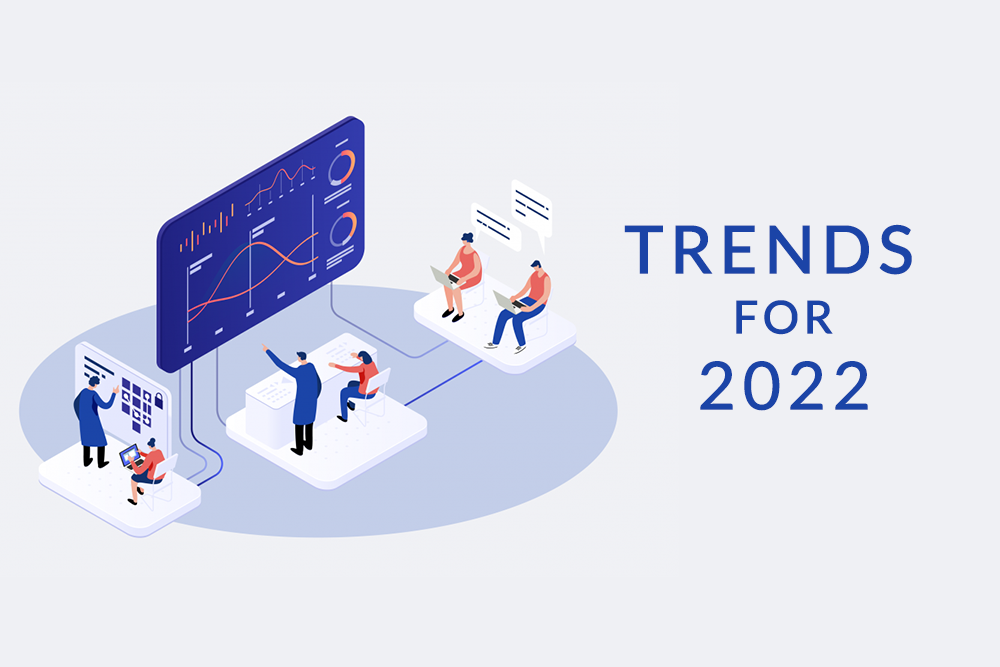The COVID-19 pandemic wreaked havoc on businesses, pushing them to rethink how they work, trade, and communicate. According to an IBM study, COVID-19 caused 60% of firms to accelerate their digital technology investments, and more than half (55%) permanently changed their organisational strategy.
Companies must have a solid technological foundation and rethink how they manage their resources, infrastructure, and people. They must address crucial metrics that were neglected, de-prioritized, or disregarded during COVID-19’s early days of adaptation.
The top digital transformation trends that will define business value in 2022:
- Businesses will rely more on connected cloud solutions
With the continued growth of the cloud, the number of enterprises using it will only grow. This is seen by the continual increase in sales of cloud management software. This expansion has various implications. One of them is that the cloud will be scrutinised more closely. Businesses will understand that relying only on one cloud provider is not a good idea.
Many large companies now provide both private and public clouds as part of their services. Amazon Web Service (AWS), Microsoft Azure, IBM, Google, and Alibaba are the top five providers.
Unsurprisingly, the majority of them provide methods to benefit from multi-cloud architecture, either directly or indirectly. Multicloud Manager is IBM’s offering, Anthos is Google’s, and Alibaba Cloud includes a number of tools to help with multi-cloud administration. Azure and AWS, on the other hand, provide customers with virtual machines via which they may link cloud services to their desktops.
2. Increased investing in machine learning and artificial intelligence
Every day, businesses generate a deluge of data, and numerous experts constantly extol its value. However, there are reports that we barely utilise 1% of the data available to us. Despite the fact that there is a lot of decent data analytics software on the market, this is the case.
Digital leaders are also encouraged to spend more on this trend as processing capacity improves. The current adoption rate of AI for data processing is also promising. If it keeps at its current pace, the above-mentioned 1% data use might climb to almost 3% by 2020.
3. The use of security-by-default will be essential.
Concerns about security have long been a stumbling hurdle for digital endeavours. Security issues are impeding the pace of innovation, according to 87% of IT and business executives, while 73% believe particular security and governance problems have worsened as their systems have gotten more linked.
Application programming interface (API) assaults will become the most common attack vector for business online applications by 2022, according to Gartner. This will force businesses to use better security tools.
4.Companies must accept the emergence of hybrid ecosystems.
The capacity to create seamless digital experiences for both workers and consumers is critical to the success of contemporary businesses, according to IT and business professionals. As businesses seek solutions to this topic, universal API management will become more prominent in 2022.
Many firms were able to handle the obstacles that the pandemic posed because of cloud technology. They have, however, significantly increased the complexity of today’s digital ecosystems. Currently, 92% of businesses have a multi-cloud strategy in place, with 82% having a hybrid cloud configuration.
Conclusion
The majority of firms began their digital transformation journeys before 2021, yet this year has undoubtedly altered the direction of several initiatives. With more than half of businesses accelerating their digital transformation initiatives, these digital innovations and trends are only expected to rise in the year 2022.
Learn more about the event Digital Transformation Summit Series
Event by Exito Media Concepts














